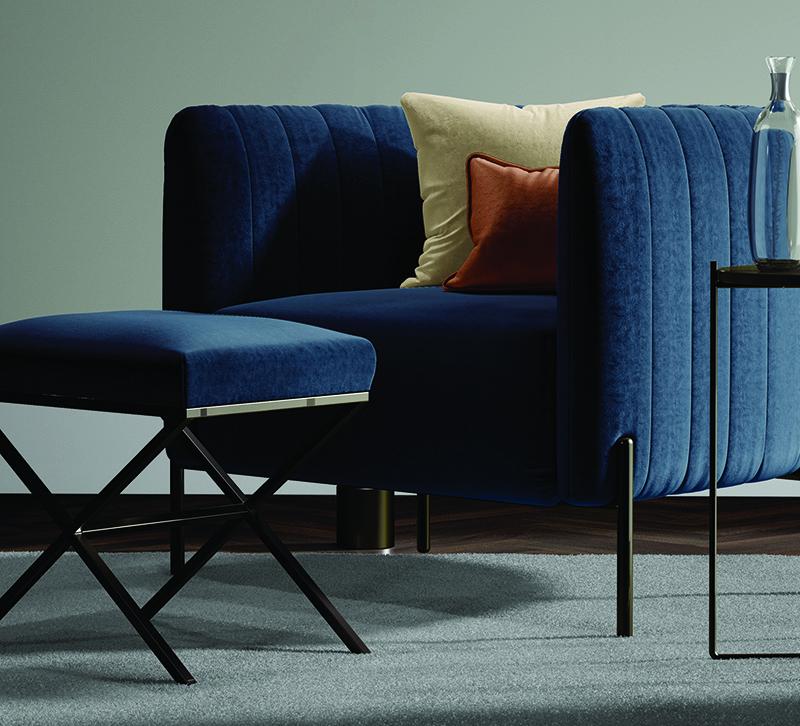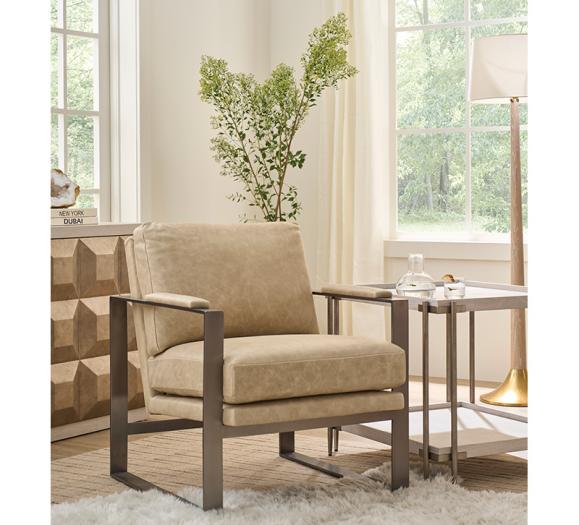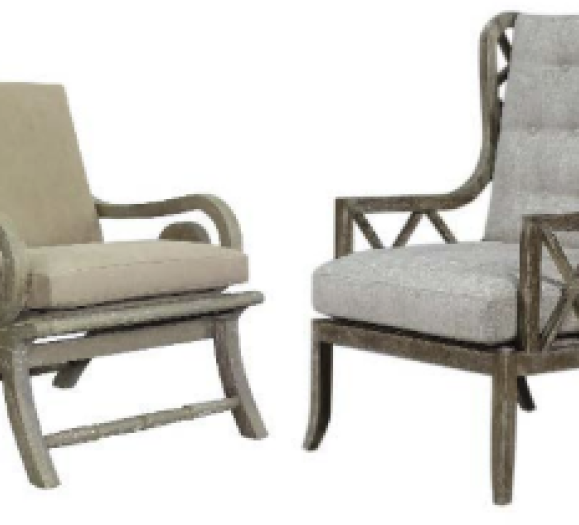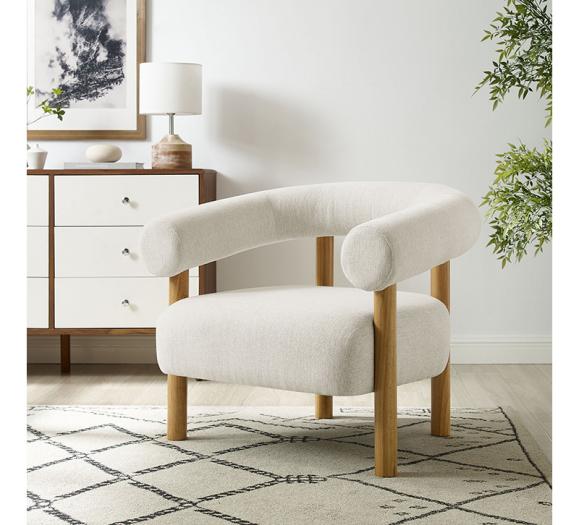New technologies have softened the textures and appeal of performance textiles across the board. Once relegated to the commercial and hospitality sectors, along with some outdoor, performance fabrics are now a regular on home furnishings in residential settings. Advances in performance, color and pattern, and most importantly, comfort, have elevated these fabrics to a point where interior designers spec them on custom upholstery more often than not, and retailers find that offering performance options, even at an upcharge, is resonating with consumers.
The move toward performance fabrics has been trending for quite some time, but a year of COVID-19, which has pushed us inside with our kids and pets, has accelerated the consumer’s understanding of and desire for fabrics that are washable, spot-cleanable, liquid-resistant and still pleasing to the eye and touch. Enter velvets, textures, even leathers and boucles that not only bring the design, they bring the durability that can outlast spills and wear and tear.
“The performance aesthetic and hand features have come a long way,” says Catherine Stowe, Design Director at Designtex. Designtex got its start in the high-end contract industry, focused on healthcare and other commercial applications. “We’ve leaned on that knowledge, and can apply it to products that are more suited to residential and hospitality.”
Designtex takes a dyed yarn approach to its performance fabrics where heat and pressure lock the dye molecules into polyester fabric more permanently. Today, there are more colors, and texture is attainable too, something that wouldn’t have been possible in bleach-cleanable fabrics some years ago. Designtex, for example, features a velvet corduroy in its latest line that comes in bold jewel tones as well as neutrals. Nail polish can be removed from this fabric with acetone and it won’t affect the pile or the color, Stowe adds. “I find it amazing that we can achieve performance luxury. You’re not really sacrificing very much as the performance comes directly from the fiber.” While water might not bead up on these fabrics because there aren’t topical chemical applications, a stain can sit for up to a week and still be removed. “A velvet that feels lovely but you can clean it; that’s appealing to residential and hospitality,” Stowe adds.
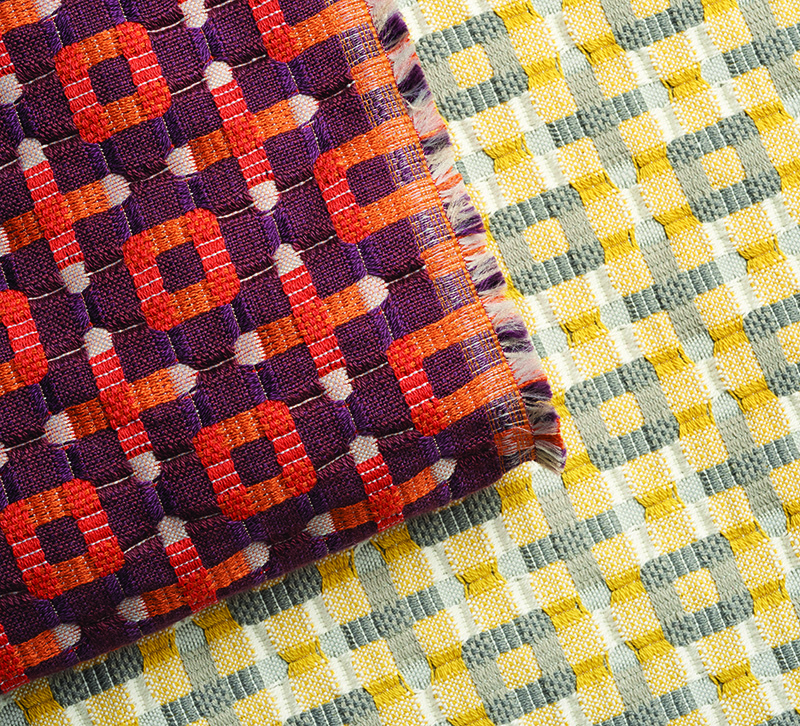
Valdese Weavers has also seen significant improvements in the performance fabrics it produces. While the ability to have richer color and pattern is appealing to a more residential customer, it’s the feel of the fabrics that are also attracting new attention. “Texture and hand are so important,” says Christy Almond, Vice President of Product Development and Marketing at Valdese. “We have enhanced our finishing so fabrics are extra soft.” Valdese has recently introduced a plush chenille and a new boucle that are luxurious with “an artisan feel,” and also durable and cleanable.
In addition to bleach cleanability, another thing today’s consumers are looking for in their fabrics is the ability to spray disinfectant around them, Almond adds. While the new InsideOut fabrics are not antimicrobial on their own, products that are antimicrobial, such as Lysol spray, can be used around them without damaging the texture or compromising the colors. “There are a lot of exciting things happening with performance,” she adds.
Take leathers, for example. New leather textiles on the market can now claim performance as well, with real leather-like texture and a rainbow of color. The high-performance faux leathers are bleach and alcohol cleanable, stand up to blue ink and hold up to antimicrobial sprays. “The huge story, however,” says Stacy Garcia, Textile Designer and Founder of LebaTex, “is that some of these leathers look like real leather, and of course, there are some that aren’t meant to look like leather.”
Garcia has these leathers in her LebaTex line, and has also partnered with Crypton and Alta for her LebaTex performance fabrics. She has been impressed with how far the “feel” has come. “When we first started, it was like plastic. It didn’t feel nice and even made noise,” Garcia says. Today the brands that apply chemistry to repel liquids and stains are using an immersion process that gives the fabric a softer hand. And because this chemistry is water-resistant, the moisture barrier can protect the foam as well, something needed when we’re living on our furniture. “People want the fabric to feel nice but have these performance qualities,” she adds.
Indoor/Outdoor
While performance fabric has been integral to outdoor furnishings, with homeowners focused more on their outdoor spaces, the feel and look of fabrics that resist the sun as well as stains and water have had to take a step up as well. “Outdoor performance fabrics not only are expected to hold up to the elements, they must be as appealing as indoor fabrics,” says Haynes King, Outdura Product Manager. “Resisting sun damage, mildew and stains isn’t enough; comfort and breathability is a must.” Outdura has seven new textiles in its Modern Textures program that are supple enough to meet these high residential standards and they have passed abrasion tests of in excess of 30,000 double rubs.
The collections’ patterns Bubbly and Sparkle surpass 60,000 double rubs, considered contract standards, according to King. “For outdoor use, we know there’s a need for 100 percent solution-dyed acrylic and also appreciate that our fabrics must reflect the aesthetic of the beautiful designs from outdoor manufacturers,” he notes.
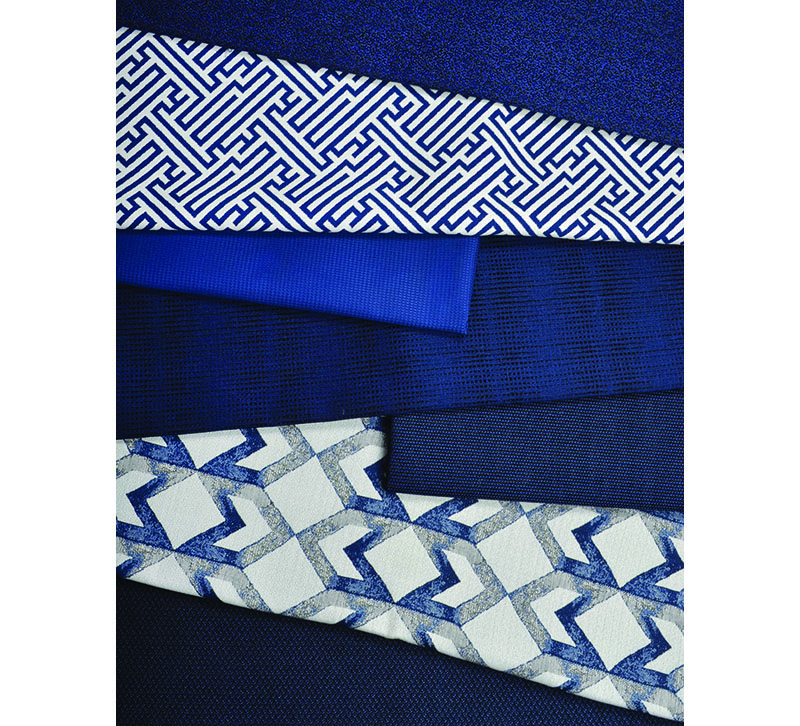
To achieve these demanding results, the company only works with top-quality fibers, and the high abrasion resistance can be attributed to Outdura’s spinning techniques, King continues. While the company can’t claim to keep the fabrics completely free of the elements as they are designed to be left out in the weather, King says, they do help with educating the consumer on how to keep their furniture clean, and free of dirt and pollen. “It generally takes only mild soap and water to clean the furniture, but for more stubborn stains, it’s always a comfort to know that a bleach solution can be used and not harm the fabric,” he notes.
As performance fabrics continue to evolve to standards that move them to the luxury corner, designers and retailers alike are finding more options available that appeal to a wide range of applications across the spectrum, most notably the homeowner, who wants the beauty and comfort but also the ability to easily clean up, especially in this time where we are spending so much more time at home.



